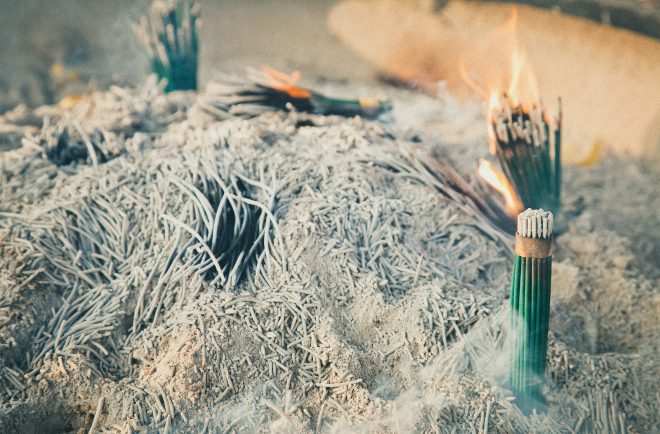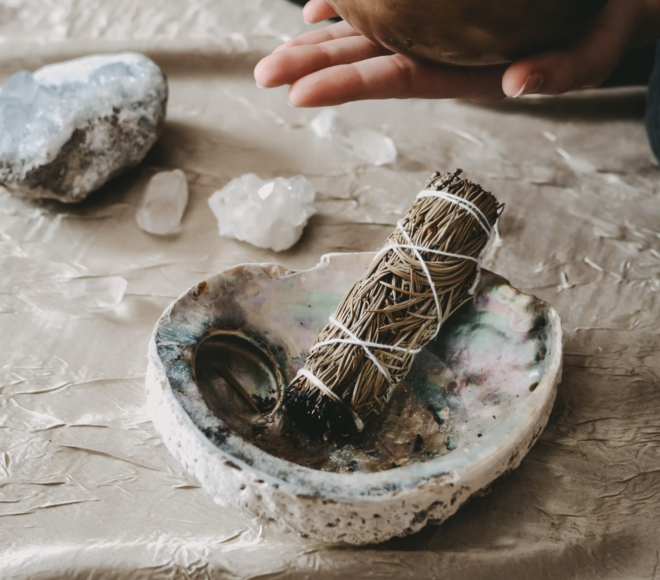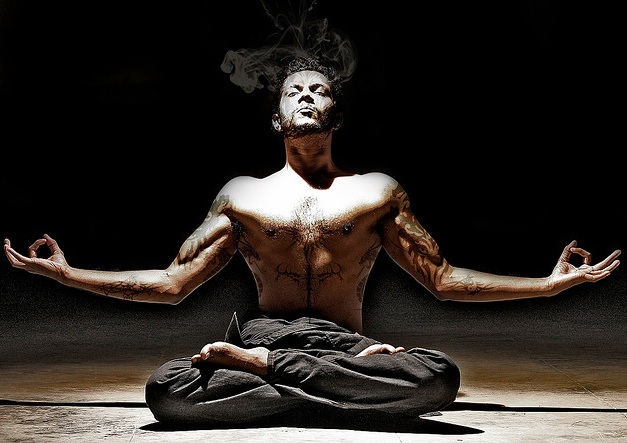 You might find yourself starting a rest asana when your yoga teacher lights an incense stick. How do you feel about that? Anxious or calm? Connected to spiritual practices and worship from the east –– Jews used incense and (cannabis possibly) in the Holy Temple thousands of years ago to commune with God, and Muslims use it to get the Jinns out –– incense has become more and more part of our every day lives.
You might find yourself starting a rest asana when your yoga teacher lights an incense stick. How do you feel about that? Anxious or calm? Connected to spiritual practices and worship from the east –– Jews used incense and (cannabis possibly) in the Holy Temple thousands of years ago to commune with God, and Muslims use it to get the Jinns out –– incense has become more and more part of our every day lives.
Easy to digest eastern philosophies pervade our workplace and community. Some people may smudge or use joss sticks to get out the bad spirits, or maybe you just like the smell of your incense sticks, but researchers from Taiwan say beware. Your incense is more likely harming you than helping you.

The large group of scientists from a number of Taiwan research organizations including the Taipei Medical University Hospital, found that incense use can cause cancer, breathing problems, heart disease and neurological disorders.
They reported their findings in the Journal of Inflammation Research (links to PDF here).
Some findings: “Notably, exposure to incense burning during pregnancy may have profound neural effects in offspring,” the researchers write.

“According to a Chinese cohort study comprising nearly 43,000 participants, it was calculated that prenatal exposure to incense burning was significantly and positively associated with early-onset hyperactive behaviors in preschoolers. Similarly, by using nationwide data set from Taiwan Birth Cohort Study, delayed gross motor milestone achievement was found among infants born in homes with incense burning.”
Incense sticks which are also known as agarbatti (a popular brand from India is Sai Baba, Satya, Nag Champa, Agarbatti Incense Sticks) is an integral element of religious rituals and cultural heredity around the world.
Incense sticks burning holds an important place in Hinduism, Christianity, Buddhism, and Islam – and as we mentioned in early Judaism by the Temple Priests. Although the place of origin for incense may be widespread, incense probably started in China, India, or Egypt.

Like tobacco use or shisha in the Middle East, burning of materials in the home creates particulate matter that can build up and irritate the lungs and eyes – and cause dermatitis and eventually lung cancer.
Does your yoga studio in LA use incense?
While it might seem like a “Chinese” problem, it is really not, they warn, citing a study in Los Angeles from the 80s:
“Through a case control study of children of ages 10 years and under in Los Angeles County, a significant increased risk of leukemia was found among children whose parents had burned incense more than once a week at home during pregnancy or nursing period, which still remained after adjusting for confounding variables such as parental occupational exposure, parent use of garden sprays, or parent use of household pesticides,” they report.

“Evidences suggest that incense burning might affect all stages of lives, from pre-conception to old age, with multiple health effects. Much work has been done in order to explore the toxicities status of burning incense in association with human health.
“Although underlying mechanisms remain still in the primary stages of study, oxidative stress and associated inflammatory responses seem to be the plausible pathophysiological pathways underlying the adverse effects of incense smoke,” they add.
Researchers in Nepal also warn about incense use, likening it to smoking.
Notably, the Taiwan researchers say collectively, “tobacco smoking has been also well recognized as an oxidative stressor that induces the accumulation of reactive oxygen species, which in turn leads to damages to the body.
“Since both incense smoke and tobacco smoke may affect the biological systems through the same pathway, it would not be surprising that the effects of incense smoke in ever or current smokers are different from those in never smokers, but in varying ways.”
Incense, depending on what it is made from can include metals and other compounds that can severely affect one’s health.
The Taiwanese researchers are aware that it will be difficult to intervene in Asian religious practice. They consider taxes on incense to encourage less use, but know that contraband and cheaper products will infiltrate the black market and cause more damage possibly.
They note: “Rather, the situation can be improved by establishing the guidelines for safer practice of incense burning. For instance, it was reported that the emission and health risk may differ among housing conditions.
“In cases where incense burning is unavoidable, every attempt must be made to improve the indoor air quality, such as reducing the amount of incense burned, enlarging the space, facilitating the ventilation, and selecting health-friendly incense products.”
With Covid probably here to stay we need to be extra careful about using incense. Alternatives suggested is vapor or smoke-like products that look like incense but which do not release particulate matter, along with essential oils or natural smells. These alternatives may provide comfort to those familiar with every day incense use. They also suggest using an app that creates a video to look like incense burning but are doubtful as to whether people would really use this option.


